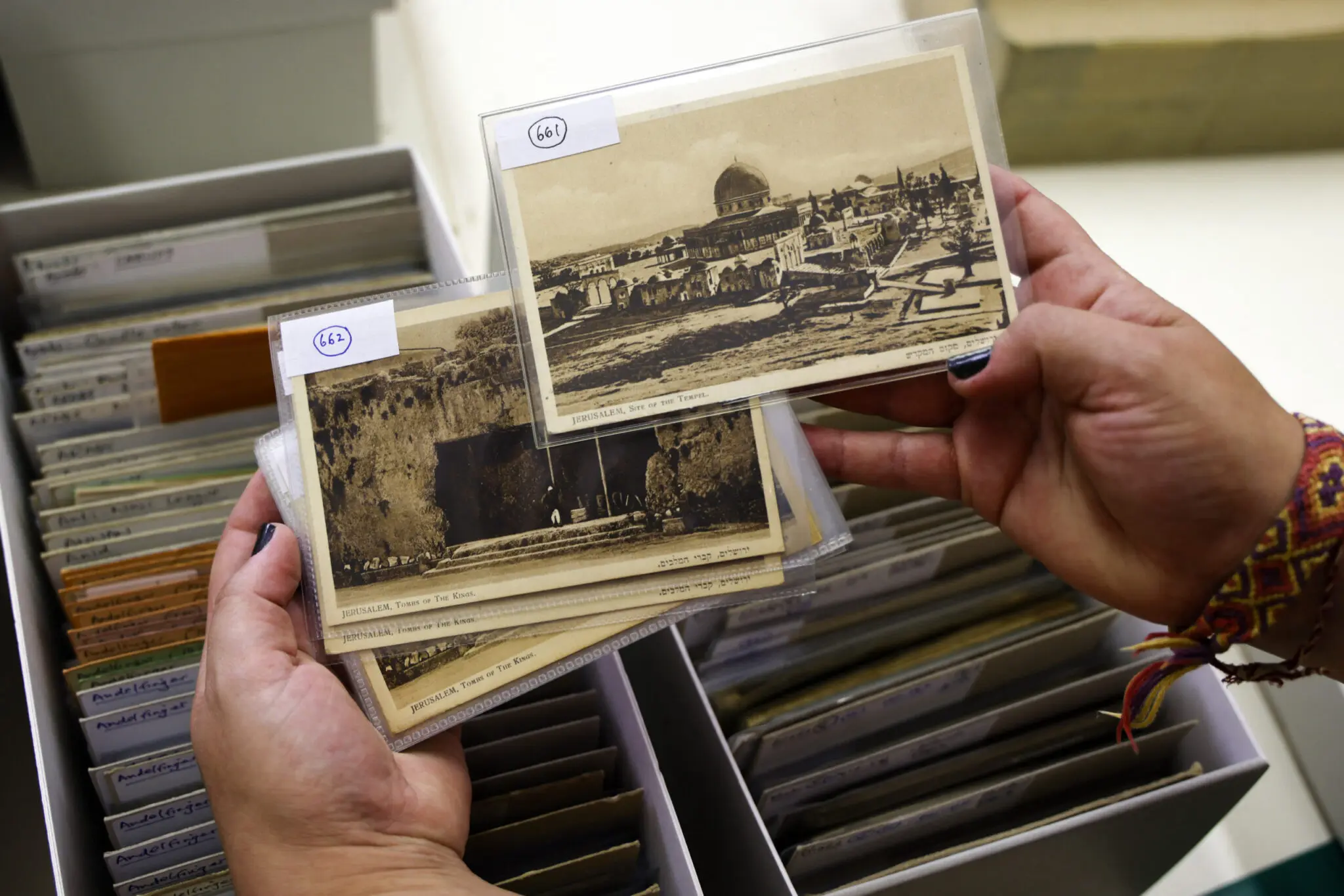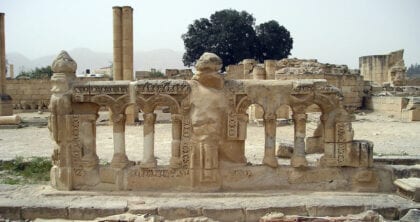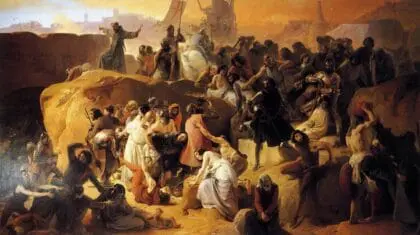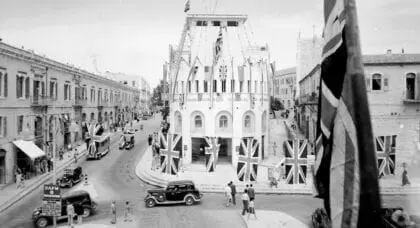Fanack presents an overview of the history of Palestine from the old times to the current conflict with Israel.

Introduction
The earliest archaeological discoveries recorded in what is known as the historic Palestine date back between 7500 and 3100 BC in Jabal Al-Qafra at the south of Nazareth and Safh Al-raml near Tiberias. The discoveries confirmed that the region witnessed a kind of simple life. The most important thing in that era was the establishment of Jericho, which is considered the oldest town in history.
Old Times
The migration of the Canaanites was the first important human migration to historical Palestine at the beginning of the third millennium BC. The region was called the land of Canaan until the arrival of the Cretan tribes in 1200 BC.
In the third millennium BC, Abraham arrived from Ur in Iraq and gave birth to Isaac, the father of Jacob, who is also called Israel and to whom the Israelites belong.
This land witnessed a series of invasions carried out by the Cretan tribes that settled on the coasts of Jaffa and Gaza. The land was named Palestine after the name of the invading Cretan tribe that merged with the Canaanites. Over time, the Canaanite component overcame the entire population who became Arab Canaanites.
David was able to establish a kingdom for the Israelites in Jerusalem. Due to the invasions of Assyrians and Chaldeans, the Jews’ state disappeared in Palestine after its continuation of four centuries (1000 – 586 BC). This era was riddled with disputes, wars, and turmoil.
Persians invaded Palestine in 539 BC, and their dominance continued for two centuries. In 332 BC, Alexander the Great subdued Palestine to the Greek Empire. Palestine remained under the rule of the divided Greek empire after the death of Alexander until 198 BC.
Since then, Palestine witnessed a state of unrest, with many countries on the ground, such as the Maccabees and the Arab Nabateans, in 90 BC. Palestine remained subordinate to the Nabatean capital Petra until the Romans took control of it.
The Romans made Palestine first a vassal of Rome and then of Byzantium until the mid-seventh century AD when Arab Muslims conquered it. During the Roman period, Palestine witnessed the birth of Jesus Christ.
Arabs and Middle Ages
In 634, Yazid bin Abi Sufyan and his companions entered Gaza. That same year, Amr bin Al-Aas defeated the Romans at the Battle of Ajnadayn and took control of Beisan “Beit She’an,” Lod, and Jaffa. Under the instructions of Caliph Umar ibn Al-Khattab, Khalid bin Al-Walid united the Muslim armies into one army to fight the Yarmouk battle, which is a defining moment in the history of Palestine. At that point, Arab tribes flowed from Syria, Hijaz, Najd, and Yemen to Palestine. Most of Palestine’s inhabitants converted to Islam. Consequently, Arabic became the dominant language there.
During the Umayyad era (661-750), Palestine was a subordinate of Damascus and was ruled by Sulayman ibn Abd al-Malik. One of the most important monuments of that period is the Dome of the Rock, which Abdul Malik bin Marwan built. Between 750 and 1258, Palestine became a part of the Abbasid state. During that era, Arabization increased. New generations arose due to intermarriage between Arab “conquerors” and the people of the country.
Between 816 and 913, the Tulunids managed to control Lebanon, Syria, Egypt, and Palestine. One of the famous monuments of that period is the fortification of Acre’s port. The fourth-century AH (913-1010 AD) is considered a century of political turmoil. Carmatians from the Gulf region raided the Levant and conquered Palestine, inflicting so much destruction. After that, Palestine was ruled by the Ikhshidis, the Seljuks, and the Fatimids.
At the end of the 11th century AD, the crusaders began their military campaigns against Palestine. These campaigns continued for two centuries, during which the crusaders managed to extend their influence to most Palestinian cities, not to mention entering Jerusalem in 1099. Nur al-Din Zangi recaptured some cities. Salah al-Din al-Ayyubi continued obtaining victories in the Battle of Hattin. Salah al-Din restored Jerusalem in 1187.
During the Mamluk rule, the battle of Ain Jalut took place near Nazareth in 1259. This battle is one of the most important and well-known Islamic battles. In 1516, the Ottomans triumphed over the Mamluks in the battle of Marj Dabiq near Aleppo and entered Palestine. Since then, Palestine came under Ottoman rule for four centuries.
France, led by Napoleon, tried to invade Palestine after the occupation of Egypt. However, the campaign was defeated after the siege of Acre.
From the British Mandate to conflict with Israel
In 1838, Muhammad Ali, the Wali of Egypt, decided to expand his influence by annexing the Levant. His son Ibrahim Pasha succeeded in conquering Al-Arish, Gaza, Jaffa, then Nablus, and Jerusalem. However, the rule of Muhammad Ali did not last for more than ten years. The Ottomans regained Palestine.
After the British forces’ victory over Turkey in the First World War, Palestine entered the British Mandate period in 1917. This mandate lasted until May 1948 – the date of establishing the State of Israel by the U.N partition resolution No. 181 issued in November 1947. This led to the displacement of hundreds of thousands of Palestinians from their lands in what was known as the “Nakba of Palestine.”
Since then, Palestinians have been waging a bitter struggle to establish their independent state and implement international legitimacy decisions. This struggle included battles, wars, popular uprisings, and peace negotiations. This included the 1948 war that led to the massive displacement of Palestinians; the Six-Day War of 1967 that resulted in the annexation of the West Bank, Gaza Strip, Sinai Peninsula, and the Golan Heights; the Battle of Karama in 1968; the Israeli invasion of Lebanon in 1982; the first intifada and the Oslo Peace Accord in 1993.
The formation of the Palestinian state still faces major challenges represented in the Israeli settlements, the American recognition of Jerusalem as the capital of Israel, and the existing political stalemate between the Fatah and Hamas.
Table of Content
Below is an overview of all content sections of Fanack’s Palestinian history file:





















